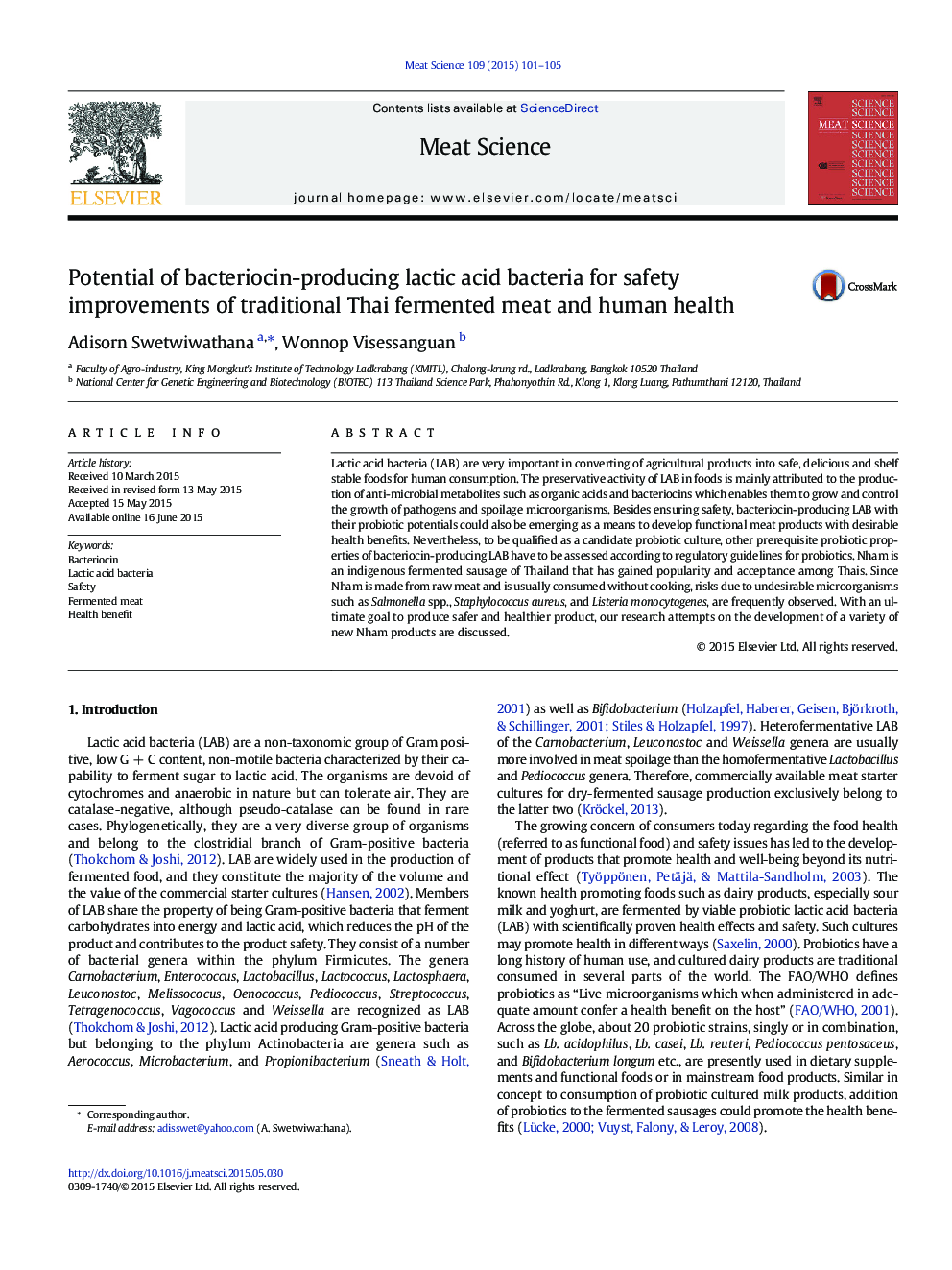| کد مقاله | کد نشریه | سال انتشار | مقاله انگلیسی | نسخه تمام متن |
|---|---|---|---|---|
| 2449664 | 1554085 | 2015 | 5 صفحه PDF | دانلود رایگان |
• Bacteriocin producing LAB can enhance quality, safety, and health benefits.
• LAB are emerging as probiotic starter in fermented meat products.
• Fermented meat products are potential carriers of probiotics for consumption.
Lactic acid bacteria (LAB) are very important in converting of agricultural products into safe, delicious and shelf stable foods for human consumption. The preservative activity of LAB in foods is mainly attributed to the production of anti-microbial metabolites such as organic acids and bacteriocins which enables them to grow and control the growth of pathogens and spoilage microorganisms. Besides ensuring safety, bacteriocin-producing LAB with their probiotic potentials could also be emerging as a means to develop functional meat products with desirable health benefits. Nevertheless, to be qualified as a candidate probiotic culture, other prerequisite probiotic properties of bacteriocin-producing LAB have to be assessed according to regulatory guidelines for probiotics. Nham is an indigenous fermented sausage of Thailand that has gained popularity and acceptance among Thais. Since Nham is made from raw meat and is usually consumed without cooking, risks due to undesirable microorganisms such as Salmonella spp., Staphylococcus aureus, and Listeria monocytogenes, are frequently observed. With an ultimate goal to produce safer and healthier product, our research attempts on the development of a variety of new Nham products are discussed.
Journal: Meat Science - Volume 109, November 2015, Pages 101–105
